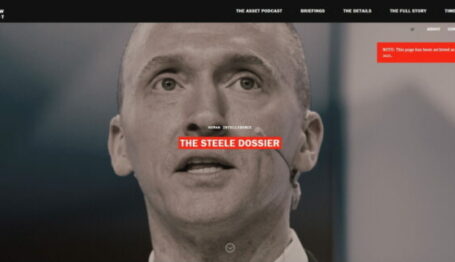Deception & Misdirection
Russiagate Had a Prequel Hoax
 Matryoshka dolls (Russian nesting dolls). Credit: jackmac34. License: Needpix.com.
Matryoshka dolls (Russian nesting dolls). Credit: jackmac34. License: Needpix.com.

“Documents Prove Lenine [sic] and Trotzky [sic] Hired by Germans” blared the New York Times front page on September 15, 1918. The front-page story revealed the discovery of “70 Official Papers” from Russia purporting to show that the then recently triumphant Russian communist revolutionaries were in truth bought and paid for agents of the German Kaiser. At the time, Germany was still engaged in World War I against Allied Powers (including the United States). The documents (really just 68 of them) had just been returned from Russia by Edgar Sisson, an employee of the Committee on the Public Information, a wartime government information agency serving President Woodrow Wilson.
Adding five sub-headlines to its story, the Times tripled down on Sisson’s supposed credibility. One read: “Berlin Financed Revolt.” Another: “Edgar Sisson, Special Agent of Bureau, Obtains and Verifies Evidence of Treachery.”
The Committee on Public Information
The Committee on Public Information produced a report endorsing the findings, and the report was widely quoted in the media. The government agency claimed the “Bolshevik revolution was arranged for by the German great general staff and financed by the German Imperial Bank and other German financial institutions.” It declared that Lenin and Trotsky and the rest of the communist gangsters were really “German agents” running a “German government, acting solely in the interests of Germany and betraying the Russian people.”
The alleged German payoff to Lenin & Co. was $25 million ($470 million in 2022 dollars).
A credulous U.S. Senate held hearings to assess the plausibility that the Bolsheviks were German government puppets.
The alarming allegations were used by the Wilson administration to justify a little-remembered military misadventure that had American and Russian troops shooting at each other in Siberia even after World War I guns had gone silent in Europe.
The veracity of the “Sisson documents”—dare we call them the “Sisson dossier”?—was widely accepted by most of the media of the day.
The New York Evening Post was a conspicuous dissenter: “The general tone of the documents is a strain on credulity. The orders and instructions and demands and responses have the directness of a thieves’ kitchen; it is not the way in which government conspiracies are couched.” The Post’s skepticism was warranted. Today, historians widely consider the “Sisson documents” to have been an obvious forgery and that Sisson, Wilson, and most of the U.S. media were duped.
But hoaxes (and shame) die slowly. In early 1931, Sisson released One Hundred Days, a memoir of his days in Russia that maintained the fraud and included a reproduction of his report supposedly demonstrating the “German-Bolshevik Conspiracy.” Yale University Press was his high-brow publisher. The New York Times stayed in the act as well, providing an April 1931 review of the book under the headline: “Sisson Book Says Germans Paid Reds.”
A Second Russian Hoax
Almost exactly a century after the Sisson Hoax came the Trump-Russia Collusion Hoax. Once again, top-level American politicians credulously swallowed and investigated a clumsily concocted conspiracy theory (and one involving Russia, at that). And nearly all the blue-blood media, led again by the New York Times, choked down the nonsense until it was too late to shut it down.
Russia Hoax, like Sisson Hoax, featured a dossier full of sensational (to say nothing of salacious) allegations. Both featured shadowy bankers supposedly financing the dirty deal. Each led to years of harmful behavior by the American government.
The damage from Russia Hoax is still ongoing. At InfluenceWatch, we are compiling a user-friendly and regularly updated accounting of the developments titled “Trump Russia-Collusion Claims.” Please look it over and share it widely.
Why should you do this?
Dial up “Edgar Sisson” and “Steele dossier” into your Google machine and you’ll get no results. The same is true for “Alfa Bank” and any other terms linking this pair of destructive historical hoaxes. It’s too easy to repeat history when the past is forgotten.



